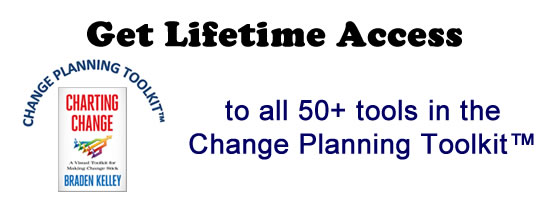Are you building NPD concepts with consumers in a way that sets them up for success?

The use of co-creation to build product concepts is a relatively rare and innovative practice. If you are embracing it you are a truly innovative innovator, a trail blazer following close behind pioneers of innovation best practice like PepsiCo, P&G and Danone. From our experience we have identified that a considerable shift in attitude and mindset is required for effective concept builds…
So what should you ask yourself in order to facilitate that mental & cultural shift?
1. Â Are you truly open-minded?
It’s the most obvious point but co-creation is only of value when you have something you’re happy to improve on – if you’re inflexible i.e. wedded to a thoroughly developed product concept, or overly driven by commercial strategy, don’t bother. The more open minded the better. You need to be prepared to go where the consumer takes you. And listen:
A cautionary tale: “We are reminded of a project where consumers in co-creation identified a brand-new, category changing, usage occasion for our client’s product innovation. Not only that, the consumer was highly engaged with the product. Yet the client chose to override the consumers’ perception of the product and emotional drivers, instead sticking with the product proposition from the original product brief. The product was delisted after the first range review. The product’s brilliant potential lost to a lack of flexibility in the organisationâ€.
We have found that inventors rarely embark on a co-creation process as their inventions have come from a place of passion and personal belief. This makes it hard to see there maybe something not working or wrongly assumed within the concept or its execution.
The good news is companies are much better placed to think objectively and self-critically about their innovation ideas. This is a real asset to them in co-creating a product concept that has optimum consumer appeal.
2. Are you prepared to build and not simply test?
Co-creation for product innovation is best used to get early ideas working to the best of their ability – using the variables of a product and its packaging to build a robust and coherent product concept.
It should not be used to test whether an idea is broadly appealing or not, or assess which is the best of a bunch – other methodologies can do this more effectively.
3. Are you clear that you can use it to fix smaller issues or existing products too?
Many innovators assume you can only co-create something big and new – but actually it works just as well when you have limited parameters to work with in. You can use co-creation to optimise an existing product. Some of our best outcomes have been on:
- launched products that aren’t performing to target
- ideas that have sailed through traditional qual and bombed in quant
- products that have launched fairly successfully only to find the competition are getting the competitive edge with their ‘me too’
- specific product concept issues, which could be: “we know the product claim isn’t working as hard as the competition – even though it’s the same technology behind itâ€; “how to get our structural packaging to communicate the intended usage occasionâ€; “how could we develop this successful product into a wider range?â€
A world of possibilities could overwhelm the consumer if not handled properly, whereas a tighter remit can actually get them thinking more creatively about how to solve the problem.
4. Are you ready to feel some uncertainty in the process?
If you’re a control freak co-creating product concepts may not be for you. In good co-creation practice you should be challenged in ways you can’t imagine. Be prepared to accept you may come out of the process with something unrecognisable from what went in.
To this end, excellent stakeholder engagement is essential and your agency should support you to ensure all parties feel comfortable with the process.
5. Are you comfortable admitting you don’t have all the answers?
This means saying goodbye to your nicely sewn up, carefully crafted and word smithed product concepts. And instead, working through the variables of your innovation to work out what is really fixed, no-go, cannot change and what can be played with and exploded outwards to look at all the possibilities.
Also, let go of the comfort blanket of existing insight. Insight required for product innovation is different. You’re probably experts in your consumer’s attitudes, behaviour and usage, not to mention what the competition are up to and that enables you to be smart in which opportunity areas you zone in on. But to create an effective product concept you need to get down to the real nitty gritty, which could be:
- Which product structure, flavour, name etc. helps position your product the way you (and they) need it to? How do these elements work together to have an overall effect?
- How hard do you need to work to be credible in this product area? And thus what’s the balance between communicating the product verses brand?
- How could we deliver a product that can credibly occupy more than one usage occasion? Or deliver against more than one key driver?  – without confusing the consumer.
6. Do you really believe that consumers can be creative and solve problems?
Again it sounds obvious but you need to have faith in your consumer, not carefully selected 1%’ers or experts, but Joe Bloggs. Time and again your consumers can surprise and delight you in their ability to engage with a problem and come up with ingenious (often simple!) ways to solve it.
HOWEVER…they must have the right materials. Question framing, session design, gamification, visualisation and environment all contribute to creating a scenario where the consumer can co-create your product concept confidently and constructively.
To sum up…
It can be daunting embarking on anything new, though considering the above can help mitigate the risk.
And let’s not forget the reward for your shift in approach could be:
- Confident, on board stakeholders
- Product/ communication briefs that are practically written for you
- Product concepts that sail through quant
- and of course…increased sales.
Image credit: Pixabay
Wait! Before you go…
Choose how you want the latest innovation content delivered to you:
- Daily — RSS Feed — Email — Twitter — Facebook — Linkedin Today
- Weekly — Email Newsletter — Free Magazine — Linkedin Group
 Shelly Greenway is a front-end innovation strategist and partner at The Strategy Distillery – a brand innovation consultancy that specialises in opportunity hunting and proposition development. Their success rates are driven by their proprietary consumer co-creation IP. Follow @ChiefDistiller
Shelly Greenway is a front-end innovation strategist and partner at The Strategy Distillery – a brand innovation consultancy that specialises in opportunity hunting and proposition development. Their success rates are driven by their proprietary consumer co-creation IP. Follow @ChiefDistiller
NEVER MISS ANOTHER NEWSLETTER!
LATEST BLOGS
Four ways you can ensure employees take accountability for their work
One of the most important driving factors for any successful business is a high-performing team. Having people working for you…
Read MoreWhat is digital upskilling and why is it important?
Photo by Annie Spratt on Unsplash In a world of business that never stands…
Read More


